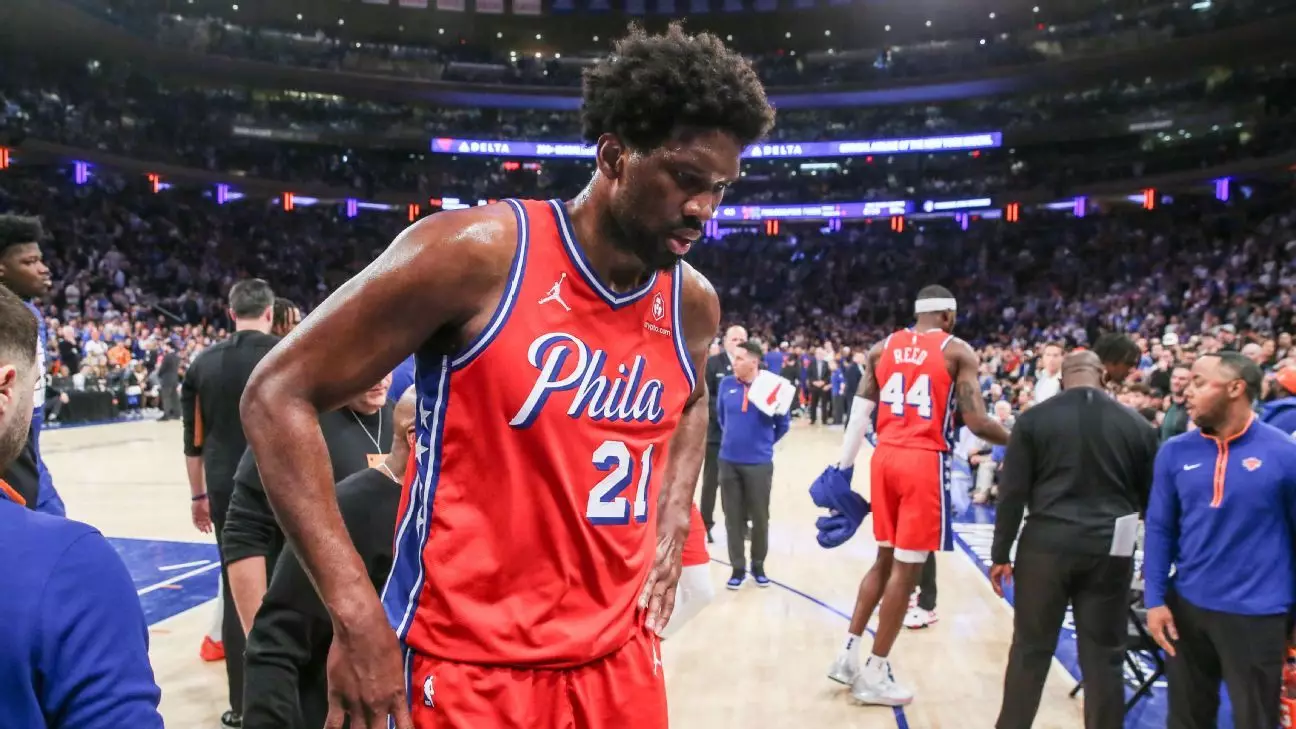Evaluating the Philadelphia 76ers’ Management of Joel Embiid’s Health
Hey there, basketball fans! As someone who loves both the game and the intricate strategies that go into every play, I find the ongoing saga of Joel Embiid and the Philadelphia 76ers utterly fascinating. If you’re like me, you’ve probably been following every twist and turn regarding how the team has been handling Embiid’s health. It’s a story that mixes sports drama with real-life stakes, and it has far-reaching implications for how players’ careers are managed in the NBA.
I remember the first time I watched Joel Embiid dominate on the court. His skill set is mesmerizing, to say the least, but what really caught my attention was his resilience. Over time, though, I’ve come to understand that his career is as much about strategic health management as it is about raw talent. This brings us to a crucial point: how exactly are the Sixers managing his health? And what lessons can we all learn from their approach? Let’s dive into this topic together.
Key Takeaways
- The 76ers face potential scrutiny from the NBA over Embiid’s participation in nationally televised games.
- Embiid’s personalized injury management plan highlights the balance between player health and team success.
- A new strategy focuses on maintaining Embiid’s longevity through scheduled rest and medical evaluations.
The Scrutiny Over Game Absences
The Philadelphia 76ers find themselves under the microscope due to Joel Embiid’s absences from key games. The NBA plans to investigate why their star center missed matchups against high-profile teams like the Milwaukee Bucks and Toronto Raptors, which were nationally televised. Officially, these absences have been attributed to a left knee injury. However, they raise questions about balancing player health with competitive integrity—a challenge every professional sports team faces.
Embiid’s missing games aren’t merely about sitting out; they reflect a larger strategy. The 76ers emphasize an individualized injury management plan for him. Such an approach is not just reactive but proactive, aiming to prevent future injuries. While it may seem like a calculated risk to some, it’s a deliberate choice to prioritize his long-term career over short-term gains. In today’s NBA landscape, this kind of strategic thinking is becoming increasingly necessary.
A New Philosophy for Longevity
This season, the 76ers appear committed to a new philosophy when it comes to player longevity, especially concerning Embiid. The organization aims to implement a cautious management plan involving periodic off days and thorough medical evaluations. This strategy is not without precedent; other teams have adopted similar approaches for their marquee players. But for Embiid, whose past injuries have significantly impacted his performance, such measures are particularly crucial.
By focusing on strategic rest and health assessments, the Sixers hope to keep Embiid in top form when it matters most—during playoff contention. It’s a move that acknowledges his history of injuries while also aiming to extend his career trajectory well into future seasons. This calculated risk is a testament to how professional sports teams are evolving their strategies to ensure player welfare aligns with team goals.

Minimizing Back-to-Back Game Participation
One of the more intriguing aspects of this new philosophy involves minimizing back-to-back game participation for key players like Embiid. Daryl Morey, the team’s president of basketball operations, has mentioned efforts to limit playing time on consecutive game days. This is part of a broader trend in the NBA that recognizes player fatigue as a significant factor affecting performance throughout the grueling season.
Embiid himself has acknowledged he may never play back-to-backs again—a statement that underscores the shifting priorities in player management today. By strategically resting him during less critical games, the team hopes to preserve his effectiveness for more important matchups later in the season. It’s a strategy rooted in science and one that might become more common across the league as teams seek sustainable competitive advantages.
Physical Preparation and Personal Commitment
Managing Joel Embiid’s physical readiness isn’t just about game-time decisions; it’s an ongoing commitment to personal fitness and health management. Overcoming challenges related to weight and injury management has been part of Embiid’s journey for years now. Reports suggest he continues his significant weight loss journey—a testament to his dedication to enhancing his performance on the court.
The decision for Embiid to wear a knee brace is another layer in this comprehensive approach. While it might not be his preference, it’s a precautionary measure aimed at ensuring joint stability and reducing injury risk. These disciplined actions highlight not just his expectations for personal performance but also illustrate broader challenges athletes face in balancing health with professional demands.
Final Thoughts
The complex situation surrounding Joel Embiid serves as a microcosm of broader trends affecting professional sports today. The Philadelphia 76ers’ nuanced approach underscores how teams are increasingly prioritizing player welfare alongside competitive objectives. As they navigate these waters—balancing immediate success with long-term sustainability—their strategies offer valuable insights into effective athlete management.
The outcome of this ongoing narrative remains uncertain as investigations proceed and seasons unfold. However, what remains clear is its significance: sparking essential conversations about how best to manage elite athletes’ careers while maintaining competitive excellence within modern sport landscapes.
Philadelphia 76ers
Joel Embiid
NBA
Sports Management


Leave a Reply